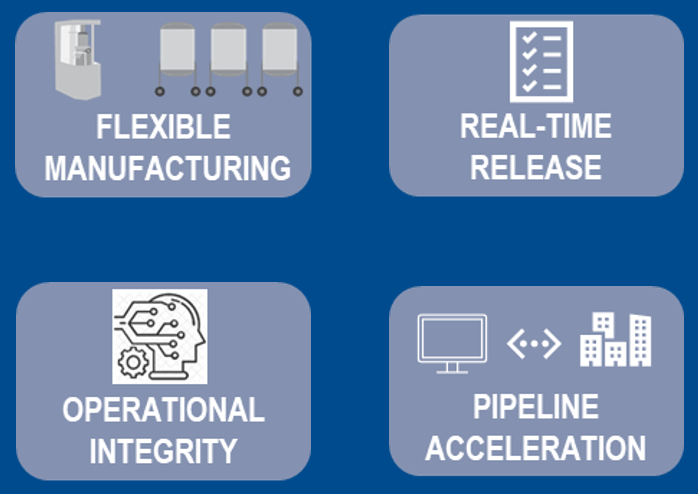Recently, the Pharma Manufacturing World Summit was held in Boston. The focus of the conference is to improve:
…cost performance while maintaining quality and compliance in the midst of rapidly changing supply chain models among internal and external manufacturing…
Emerson’s Christian Berg presented Are We There Yet? Tackling Manufacturing Challenges with the Digital Plant. Christian opened with the idea that tackling the manufacturing challenges that manufacturers in the Life Sciences face should be considered a journey. Some potential starting points may include paper tech transfer processes, siloed data, batch/fixed processing, and post-batch testing.
 The solutions to the challenges could be pipeline acceleration, operational integrity improvements, more flexible manufacturing, and real-time release. Most manufacturers are operating in levels three and four of BioPhorum’s Digital Plant Maturity Model (DPMM). The model addresses complex questions, such as:
The solutions to the challenges could be pipeline acceleration, operational integrity improvements, more flexible manufacturing, and real-time release. Most manufacturers are operating in levels three and four of BioPhorum’s Digital Plant Maturity Model (DPMM). The model addresses complex questions, such as:
- What does the concept of ‘digital plant’ mean in biopharmaceutical manufacturing?
- How can digital plant capabilities be defined, measured and transformed?
- How mature is my plant today?
- How does my plant compare against industry benchmarks?
- What is my transformation aspiration in the next three, five, and ten years?
- What are the prerequisites for moving up the maturity curve?
Level 3 is a connected plant that’s vertically integrated between the production and business systems. Level 4 moves up to a predictive plant with real-time insights into impending issues and greater visibility across the whole supply chain. The highest level, level 5, moves up to a fully adaptive plant to address issues before they develop into issues affecting safety, reliability, quality, and production efficiency.
Christian shared a three-step process to define the journey—collaborate, analyze, and recommend. He and other Emerson Life Sciences industry consultants use this defined consultative methodology for engaging with clients to determine where they are, where they want to go, and how to get there in a collaborative way that meets business goals and priorities.
In the Collaborate step, the team identifies business priorities, drivers, and goals, assesses their current DPMM maturity level, and visualizes the desired operations state. In the Analyze step, the team defines the digital enablers, maps capabilities, and evaluates the value proposition of potential solutions. Finally, in the Recommend step, the team presents the DPMM future state, a recommended solution road map, and defines the costs, complexities, and capabilities.
A vital part of this consultative methodology is identifying the current state versus strategic objectives. Christian shared a McKinsey study showing the performance of peer companies across several categories—time to market, maintenance costs, productivity levels, machine downtime, productivity level gains through automation of knowledge work, inventory levels, and costs for quality. The team explores current performance versus aggregated peer performance as part of the collaboration process. The BioPhorum DPMM is used for assessing the current state.
Christian offered these recommendations for planning your journey to tackle your manufacturing challenges:
- Map the business strategy, goals, and drivers to capabilities
- Capability gaps define the real requirements
- Evaluate digital stack of solutions to meet the requirements
- Estimate the benefits
- Define the journey, not just the final state
- Include stakeholders from the beginning
- Remember organizational change management
- Evaluate options on the journey
Visit the Life Sciences & Medical section on Emerson.com and connect with Christian and the Life Science industry consultants to plan your journey up the Digital Maturity Model levels all the way to an adaptive plant for safer, more productive, and more reliable operations.





